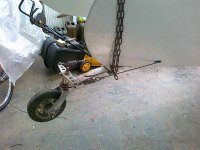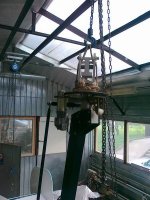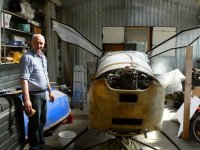JonSu
Junior Member
Good day, friends.
Here are some of the design details for a tailwheel gyroplane:
1. The plane of rotation of the rotor during preliminary spinning must be horizontal, otherwise there is a danger of waving the blades in the presence of wind.
2. I think the control stick needs a special stop mechanism in its forward position. It will help when taxiing with a rotating rotor.
3. The extension of the main landing gear can be larger than for an aircraft (see my post above) but within reasonable limits. Because a situation with an interrupted takeoff run is possible.
If anyone complements this, I would be glad.
Sincerely.
Here are some of the design details for a tailwheel gyroplane:
1. The plane of rotation of the rotor during preliminary spinning must be horizontal, otherwise there is a danger of waving the blades in the presence of wind.
2. I think the control stick needs a special stop mechanism in its forward position. It will help when taxiing with a rotating rotor.
3. The extension of the main landing gear can be larger than for an aircraft (see my post above) but within reasonable limits. Because a situation with an interrupted takeoff run is possible.
If anyone complements this, I would be glad.
Sincerely.



